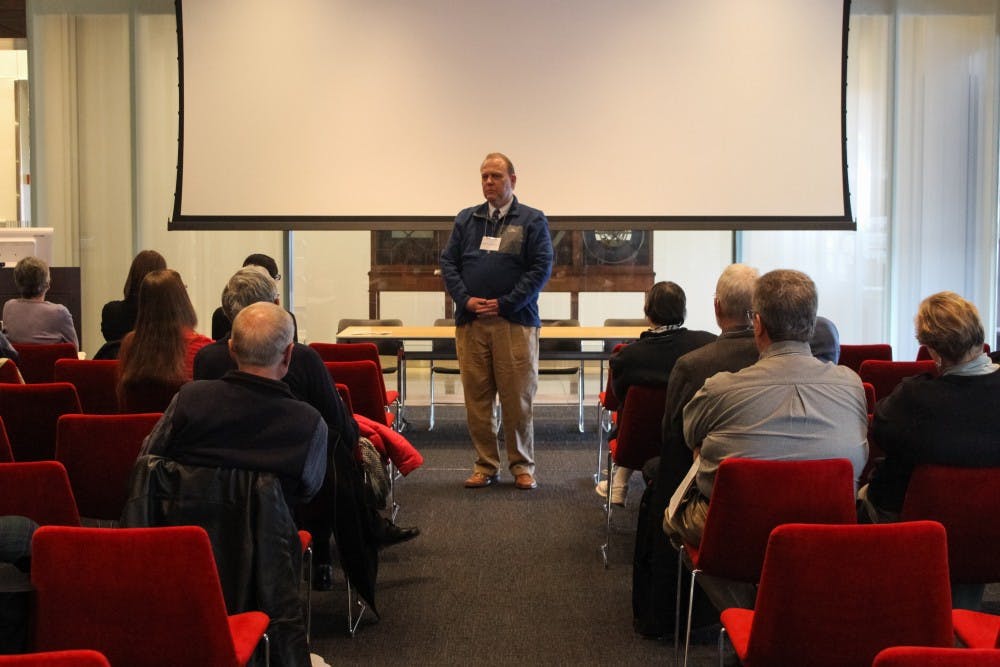
Penn Libraries unveiled a new exhibit this month that commemorates the 100th anniversary of the World War I armistice and recognizes Penn's involvement in the conflict.
On April 5, Penn Libraries held the "Life During Wartime" symposium to introduce the exhibit. Like the exhibit, the event attempted to explore Penn’s role — both positive and negative — during this tumultuous period, and its evolution into the University today.
A significant chunk of the symposium was dedicated to exploring the roles of various Penn alumni in the war. John Ditunno, a physical medicine and rehabilitation specialist, explored the role of R. Tait McKenzie — a famous sculptor with 178 sculptures scattered across Penn, and a physical rehabilitation specialist who trained some of the world’s first physiotherapists.
Mark Frazier Lloyd, director of University Archives and Records Center was one of the key speakers.
“Penn was not Penn a hundred years ago,” Lloyd said. “When a professor spoke out against something as simple as child labor, the trustees cut him off. That was the end of his appointment. That’s not what we know as higher education in America today.”

Carton Rogers, the vice provost and director of Libraries kicked off the event with a recollection of both his grandfathers fighting in World War I. He echoed Lloyd’s sentiments about how different the University used to be.
Citing a record of The Daily Pennsylvanian, he placed special emphasis on Provost Edgar Fahs Smith’s reaction to an anti-war publication that was being distributed on campus. “Any propaganda opposing the war and tending to foment disloyalty will not be tolerated around the university," Smith said, according to the DP in 1917.
“One can almost hear the faint cry of fake news,” Rogers said.
Throughout the symposium, several speakers drew parallels between the divides in society during World War I and society today. Nick Okrent and Rebecca Stuhr, the two co-curators of this symposium were also active commentators. Okrent recalled how laws were passed in criminalizing any public statement against the government or the President, comparing that to how the current media climate discourages discourse.
A pervasive rhetoric of “us vs. them” was dominant in that society, and demographics such as the Germans, pacifists, and immigrants were not only shunned, but also felt unsafe at times.
“One might see a parallel to today where the rhetoric is very much about seeing people of a certain group as being 'them,'” Okrent said.

To summarize the approach of the current administration towards any dissenting opinions in the media, Stuhr commented, “It’s a disruption of our democratic processes by undermining any sense of fact-based truth. Evidence is of no relevance, whether you have it or you don’t.”
The "Life During Wartime" exhibit will be open until Aug. 3 on the first floor of Van Pelt Library.
The Daily Pennsylvanian is an independent, student-run newspaper. Please consider making a donation to support the coverage that shapes the University. Your generosity ensures a future of strong journalism at Penn.
Donate







